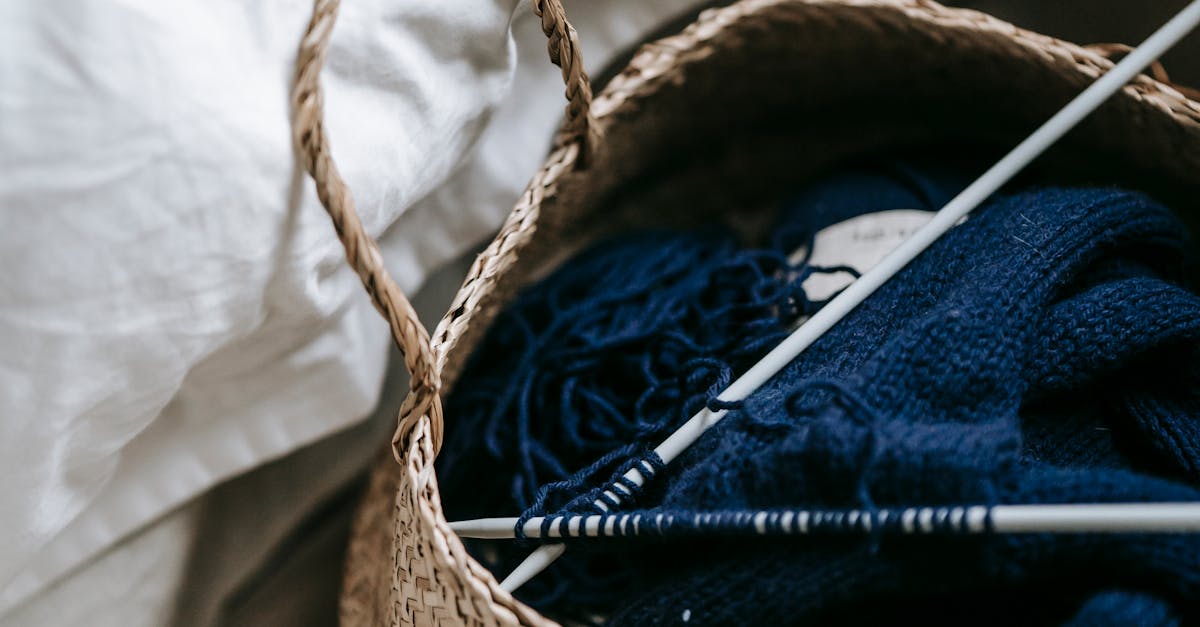Knitting is not just a craft but a therapeutic journey that brings solace and relaxation to many crafters around the world. Understanding knitting pattern terms is crucial in embarking on successful knitting projects while also contributing to mental well-being. In this article, we will delve into 8 essential knitting methods, including brioche knit and intarsia, with a focus on how these techniques can be therapeutic and supportive for mental health.
1. Brioche Knitting:
Brioche knitting is a beautiful and intricate technique that creates a reversible, textured fabric. The repetitive nature of brioche stitches can be soothing and meditative, fostering mindfulness and relaxation. In times of stress or anxiety, immersing oneself in the rhythmic flow of brioche knitting can provide a therapeutic escape.
2. Intarsia:
Intarsia is a colorwork technique that involves knitting blocks of color within a project. This method encourages focus and concentration as knitters carefully manage multiple yarn strands. Engaging in intarsia knitting can help improve cognitive function and mental acuity, acting as a mental exercise that promotes mental well-being.
3. Stockinette Stitch:
The stockinette stitch is one of the most basic knitting techniques, creating a smooth fabric with rows of ‘V’ shaped stitches. Knitting in stockinette can be a comforting and repetitive motion that calms the mind and reduces stress. The rhythmic nature of this stitch can serve as a form of mindfulness practice, promoting relaxation and concentration.
4. Garter Stitch:
Garter stitch is another straightforward knitting method that involves knitting every row. This simple yet versatile stitch pattern can be incredibly soothing and therapeutic, allowing knitters to enter a state of flow and creativity. Knitting in garter stitch provides a sense of accomplishment and satisfaction, boosting mental well-being.
5. Lace Knitting:
Lace knitting involves creating intricate openwork designs by strategically increasing and decreasing stitches. Knitting lace patterns requires focus and attention to detail, promoting mental sharpness and problem-solving skills. The delicate and intricate nature of lace knitting can be both challenging and rewarding, offering a sense of fulfillment and accomplishment.
6. Cable Knitting:
Cable knitting is a technique that creates twisted stitch patterns resembling braided cables. Knitting cables involves working out intricate patterns and crossing stitches, stimulating the brain and enhancing cognitive abilities. The tactile nature of cable knitting engages the senses and provides a sensory experience that can be grounding and calming.
7. Ribbing:
Ribbing is a versatile knitting method commonly used for creating cuffs, collars, and hems. Knitting rib stitches alternates between knit and purl stitches, creating a stretchy and textured fabric. The repetitive nature of ribbing can be soothing and comforting, offering a sense of structure and rhythm that promotes mental stability and support.
8. Fair Isle Knitting:
Fair Isle knitting is a colorwork technique that originated in the Shetland Islands, known for its intricate patterns and motifs. Knitting Fair Isle designs involves working with multiple colors in each row, requiring focus and concentration. The creative challenge of Fair Isle knitting can be a source of mental stimulation and inspiration, fostering a sense of accomplishment and artistic expression.
In conclusion, knitting pattern terms encompass a wide array of techniques that not only enhance your knitting skills but also contribute to mental health and well-being. Whether you are exploring the soothing rhythm of brioche knit, the creative challenges of intarsia, or the intricate beauty of lace knitting, each method offers a unique opportunity for self-expression, support, and relaxation. Embrace the therapeutic power of knitting and let your needles guide you on a journey of creativity and mindfulness.


